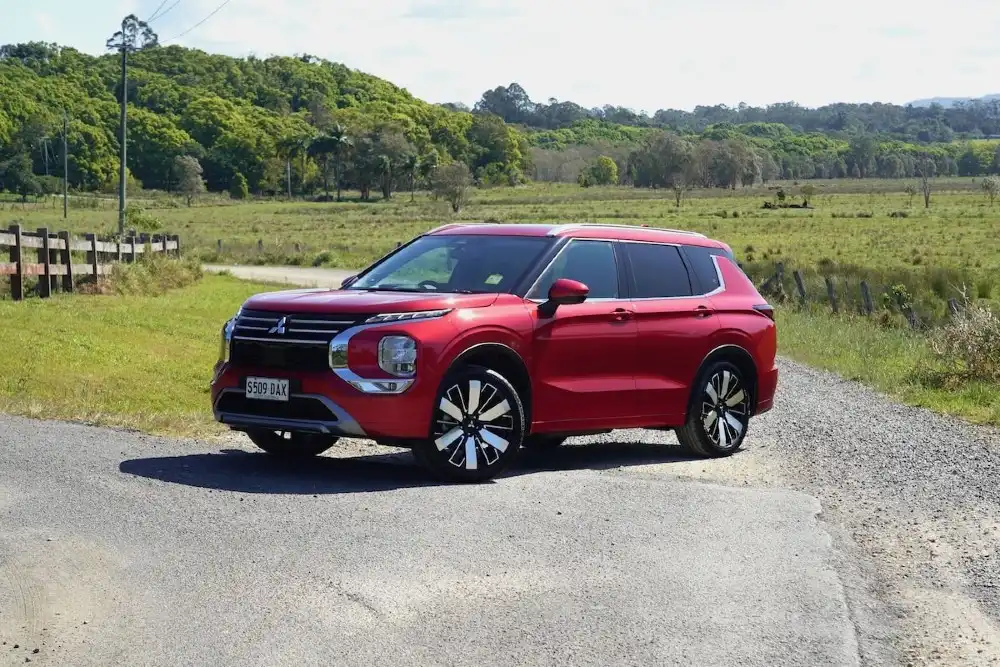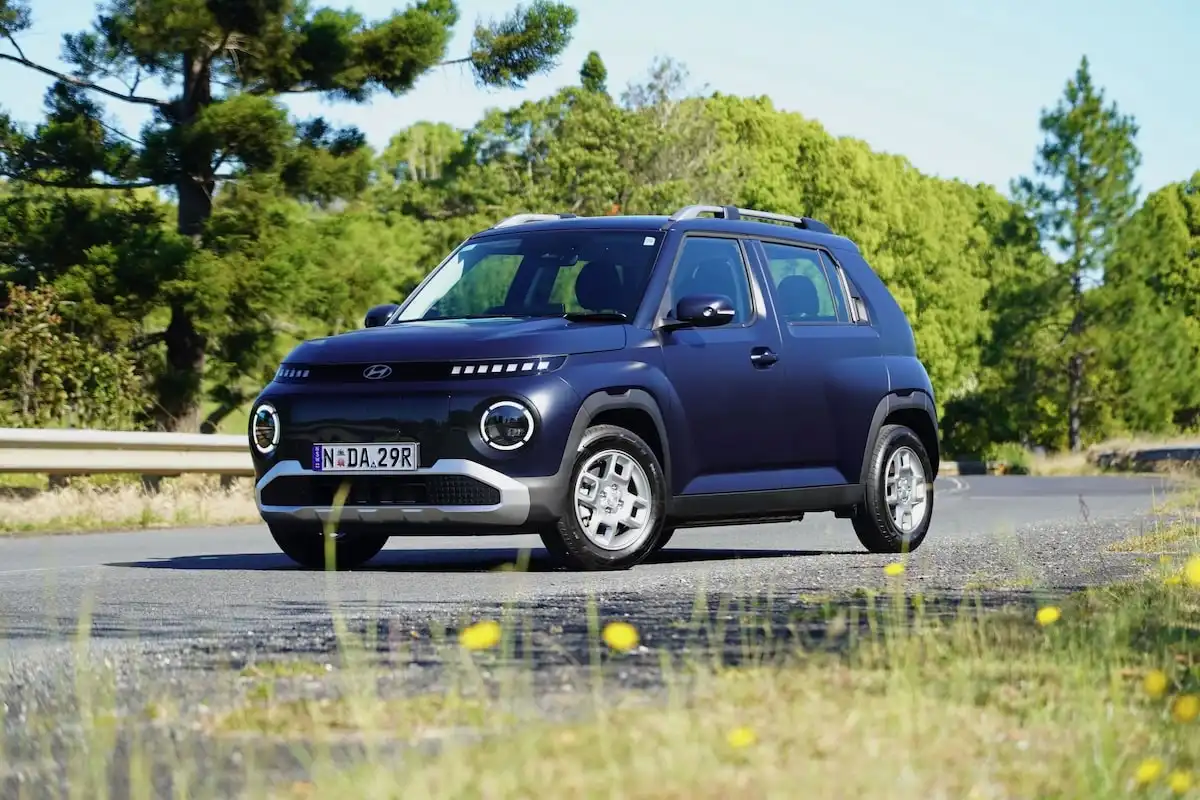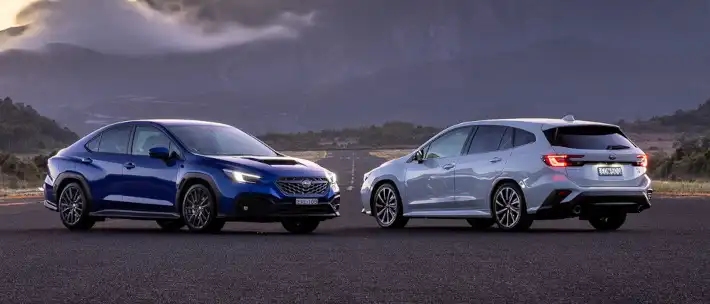In its latest form, the Tucson has picked up some added equipment and technology upgrades, while keeping list prices within reach of most Australian family buyers as it competes with heavyweights of the midsize SUV segment.
Just how well does the 2023 Hyundai Tucson handle a family, then, and hold its own against its fierce rivals? Let’s take a closer look to find out.
Hyundai Tucson Competition
Hyundai Tucson |
VS |
Kia Sportage |
| Toyota RAV4 | ||
| Mazda CX-5 | ||
| Nissan X-Trail | ||
| Honda CR-V | ||
| Mitsubishi Outlander | ||
| MG HS | ||
| Subaru Forester |
Starting Price: $35,150
How Much Does It Cost?
The Hyundai Tucson lineup kicks off from $35,150 for the entry-level Tucson 2.0 FWD, with prices rising up to $40,150 for the Tucson Elite 2.0 FWD and up to $44,150 for the Tucson Elite 1.6T AWD.
Stepping up to the Elite 2.0TD AWD brings the price up to $46,150, while the Tucson Highlander 2.0 FWD is priced at $47,150.
Finally, the Tucson Highlander 1.6T AWD is priced at $51,150 and the range-topping Tucson Highlander 2.0TD AWD is priced at $53,150.
Keep in mind that these prices are subject to change and do not include on-road costs.
How Much Can OnlineAuto Save You?
Using OnlineAuto’s car purchasing service, take advantage of the expertise of one of our car specialists to assist you in finding the best value model for you.
Hyundai Tucson - HIGHLANDER N LINE (FWD) Specifications
| Model Date | 2023 |
| Make | HYUNDAI |
| Model | TUCSON |
| Series | NX4.V2 MY23 |
| Variant | HIGHLANDER N LINE (FWD) |
| Body | 4D WAGON |
| Fuel type | UNLEADED PETROL |
| Transmission | 6 SP AUTOMATIC |
| Drive | FWD |
| Engine | MPFI |
| Engine capacity | 1999 |
| Engine configuration | DUAL OVERHEAD CAM / 16 valves |
| Engine RPM | 6200 / 4500 |
| Cylinders | 4 |
| Torque | 192 |
| KW | 115 |
| Fuel tank size | 54.0 |
| Fuel usage specs | 8.1 / 0 |
| CO2 | 184 |
| ANCAP security rating | 5 |
Get in touch with one of our Car Buying Specialists today.
Request a quoteWhat Features Does the Hyundai Tucson Have?
Hyundai’s entry-level Tucson comes riding on a set of 17-inch alloys and picks up halogen headlights with LED daytime running lamps and LED indicators, roof rails, adaptive cruise control, a rear-view camera with rear parking sensors, cloth upholstery with leather-wrapped steering wheel and gear lever, a wireless charging pad and an 8.0-inch infotainment system with wireless Apple CarPlay & Android Auto.
Stepping up to the Tucson Elite range adds 18-inch alloys, dual-zone climate control, keyless entry & start, black leather upholstery with heated front seats, front parking sensors, rear privacy glass and a 10.25-inch infotainment display.
Finally, Hyundai’s range-topping Tucson Highlander lineup receives LED head & tail lights, 19-inch alloys, a panoramic sunroof, a powered tailgate, a surround-view monitor, heated rear seats, ventilated front seats, LED ambient lighting, a 10.25-inch digital instrument cluster, heated steering wheel and an upgraded Bose sound system.

Range Features:
-
17-inch alloys
-
Halogen headlights with LED daytime running lamps & LED indicators
-
Roof rails
-
Adaptive cruise control
-
Rear-view camera with rear parking sensors
-
Cloth upholstery with leather steering wheel & gear lever
-
Wireless charging pad
-
8.0-inch infotainment system with wireless Apple CarPlay & Android Auto
-
18-inch alloys (Elite)
-
Black leather upholstery (Elite)
-
10.25-inch infotainment system (Elite)
-
LED head & tail lights (Highlander)
-
19-inch alloys (Highlander)
-
Surround-view monitor (Highlander)
-
LED ambient lighting (Highlander)
-
10.25-inch digital instrument cluster (Highlander)
-
Bose sound system (Highlander)
Is the Hyundai Tucson Comfortable to Drive?
Hyundai’s Tucson range comes with a choice of three engine options, as well as the choice of front-wheel and all-wheel drive platforms.
The base model picks up a fairly uninspiring 2.0-litre four-cylinder producing 115kW of power and 192Nm of torque, which is paired with a six-speed automatic transmission and front-wheel drive layout only.
For those looking for some AWD stability, the 1.6-litre turbocharged engine (132kW/265Nm) adds some much-needed power and torque to the mix, as well as four-paw stability and an eight-speed dual-clutch transmission.
The dual-clutch transmission can be a bit slow to respond and even lurch back and forth between some gear switches, though this is common for DCT units and nothing specifically wrong with the Tucson.
When it behaves itself, the DCT offers fast, snappy shifts that help you pick up speed continuously without lifting off the throttle.
Finally, the range-topping 2.0-litre turbo-diesel engine produces 137kW of power and a very healthy 416Nm of torque that makes for by far the best acceleration figures off the line.
The driving experience on offer in the Tucson is particularly user-friendly around town, making it a great urban runaround thanks to its lightweight steering rack and relatively compact turning circle.
It’s happy to bumble around quietly and comfortably in town, while the ride quality can get a bit firm on rougher country roads thanks to the stiffer suspension hardware that helps it tackle corners with more confidence than some softer midsize SUV packages.
All up, the Tucson strikes a healthy balance between everyday driving comfort around town and a stable, confidence-inspiring ride on open roads, though the platform would have benefitted from a local suspension tune like its twin - the Kia Sportage - received.
Is it Fuel Efficient?
Hyundai’s 2.0-litre, four-cylinder base model returns fuel economy figures of 8.1L per 100km, making it by far the thirstiest member of the Tucson family.
Upgrading to the 1.6-litre turbocharged unit drops fuel economy figures to 7.2L/100km on a combined cycle, while the Tucson powered by a turbo-diesel engine is rated at 6.3L/100km on a combined cycle, making it the most efficient Tucson available.
Is it Practical and Spacious?
Designed with families as the target market, the Hyundai Tucson’s cabin is every bit as spacious and practical as you’d hope from a five-seat midsize SUV package and, in its latest form, super sleek inside, too.
Up front, the driver and front passenger have a tonne of headroom in the Tucson’s cockpit, with access to plenty of adjustment in the driving position and higher-spec variants picking up electronic seat adjustment.
There’s storage options aplenty in the Tucson’s front row, which separates the driver and front passenger with a bulky centre console housing cup holders, a storage area and wireless charging pad at the base of the dash and added storage inside the large folding armrest.
You’ll also find an added layer of storage beneath the centre console that helps de-cluttering all the loose items that families accumulate.
Move to the rear of the cabin and there’s more than enough space for adults seated in the second row, with no complaints when it comes to headroom, either.
The second row pick up access to a set of air vents, USB charging ports, a folding arm rest with cup holders and large door bins, atop the ISOFIX anchors and three top tether mounts for forward and rear-facing child seats.
Finally, the Tucson range comes packing a healthy amount of cargo storage potential, with its boot measuring in at 539L, expanding to 1860L with the second row folded, out-doing competitors like the CX-5, though falling short of the RAV4’s boot space figures.
Is it Safe?
The Hyundai Tucson range has picked up a five-star ANCAP safety rating, scoring 86% for adult protection, 87% for child protection, 66% for vulnerable road user protection and 70% for safety assist.
As standard, entry-level Tucson variants come fitted with autonomous emergency braking with junction, cyclist and pedestrian protection, blind-spot monitoring, rear cross-traffic alerts, adaptive cruise control, a rear-view camera with parking sensors, lane-keep assist, leading vehicle departure alerts, tyre pressure monitoring and safe exit warnings.
Opting for the Elite and Highlander adds features like rear autonomous emergency braking, front parking sensors and a surround-view monitor, though it’s nice knowing the base model picks up all the important safety gear you’d expect in a family SUV.
Our Verdict: Is The Hyundai Tucson Worth it?
While the Hyundai Tucson has the unenviable job of heading up against the biggest names in the midsize SUV segment, it does well to cement itself a spot as a top performer for Australian families.
Admittedly, in base form with the base engine, it’s a fairly bland driving experience, though the generous safety and entertainment equipment lists help push it over the line as a safe bet on your shortlist for a midsize SUV.
With so much variety within the range, there’s a Tucson to meet a large range of budgets and family needs.
If you’re tossing up your best options in the world of family-friendly SUVs, don’t forget to reach out to one of our car-buying specialists who can help find you the best possible price on your dream car.
Five Specs You Need to Know
-
Five-year/unlimited-kilometre warranty
-
8.1L/100km economy figures drop to 7.2L in 1.6-litre turbo and 6.3L in turbo-diesel
-
539L boot expands to 1860L with rear seats folded
-
Five-star ANCAP safety rating
-
12-month/15,000km service intervals drop to 10,000km in 1.6-litre turbo
Get in touch with one of our Car Buying Specialists today.
Request a quote







